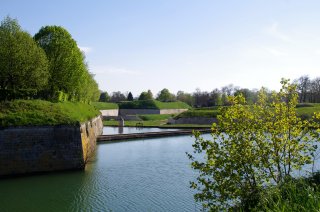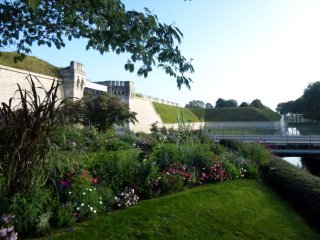
Since its very origins, Toul has always been a strategic place, at the confluence of the Moselle river and the Ingressin brook and on the road of Agrippa (the Roman road between Langres and Trier).
A religious town, Toul becomes a fortified town as well and will have all forms of fortification : an antique rampart from the 3rd and 4th centuries, medieval ramparts ordered by Bishop Roger de Marcey in the 13th century and a fortification with bastions built according to the plans of Vauban, which was reworked by Séré de Rivières after the war in 1870.
Toul is the only town in Lorraine that preserved the town walls. The town plans will be marked all along its history by military architecture and its evolving technical evolution.
In 1552, Toul is integrated into French territory. In 1697, the Treaty of Ryswick ends the war with the Grand Alliance.
In order to defend the new borders of the French Kingdom, the towns situated on the defense lines are modified : the medieval walls are replaced by ramparts with bastions. In 1698, Vauban designed a plan with three town gates and enlarged the town walls towards the South-East.
The work starts in 1699 and finishes in 1712 but Vauban’s project has not been completed. Of the three gated, only the Porte de Metz remains in its original state, with its clever lifting system. The other gates, the Porte Moselle and the Porte de France have been changed in the 19th century.

After the war in 1870 when the town was invaded by the Prussian army, the defense system of Toul became reinforced by Séré de Rivières. He established a belt of fortresses on the top of the surrounding hills : well-organized and consisting of large polygonal half-buried defense works, this protection was securing “the Breach in Lorraine” (“La Trouée de Lorraine”, a defense line with a series of fortifications and strongholds).
The town was not attacked during the Great War.
But was badly damaged during WWII, by bombings and fires. The cathedral was damaged and 40% of the town center was destroyed.
The reconstruction after the war, preserved part of the ramparts, especially along the boulevard Aristide Briand and behind the Port de France, 2 sites with walking paths.
Visit the ramparts : http://www.lepredenancy.fr/en/discovery/our-vauban-and-sere-de-rivieres-fortifications.html